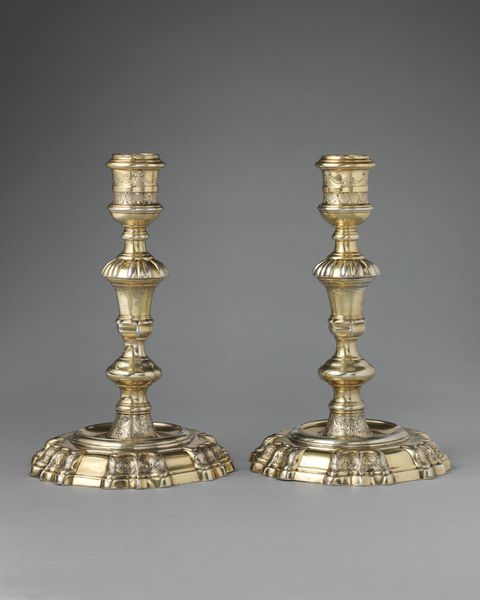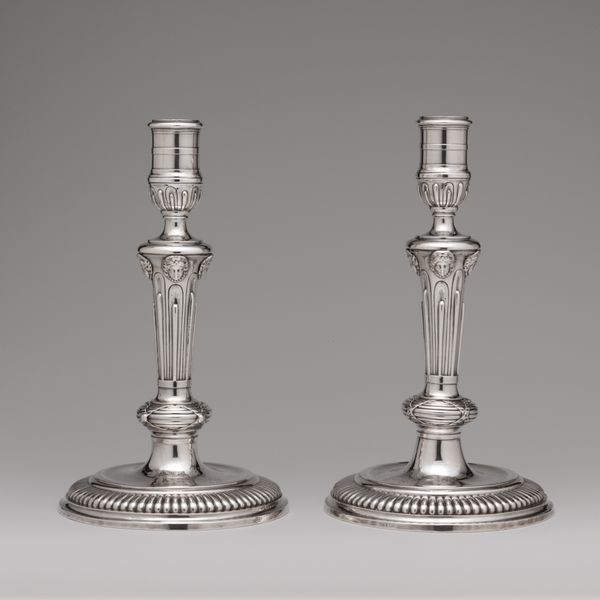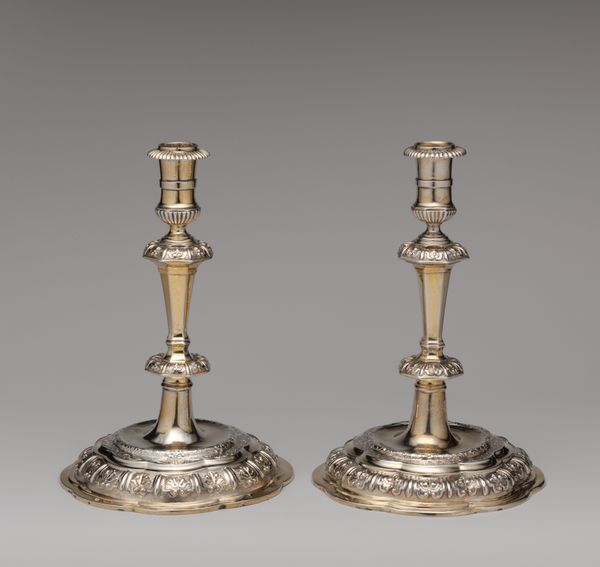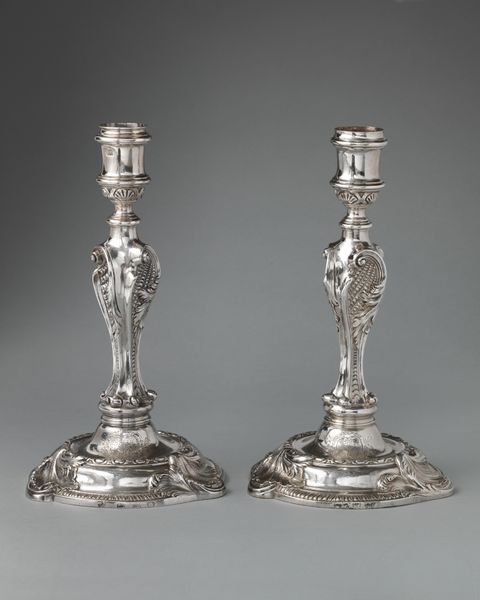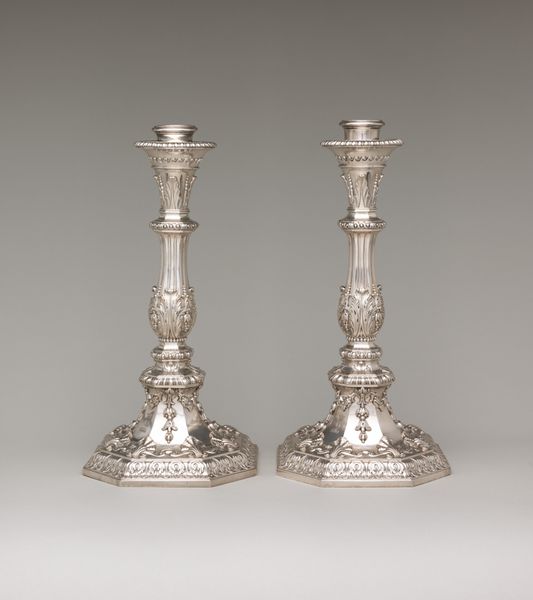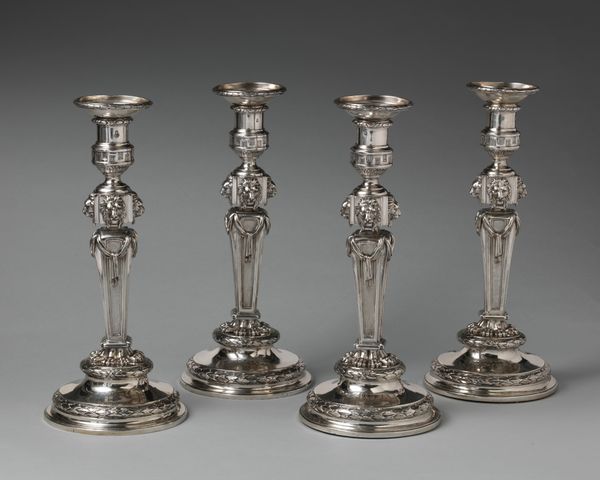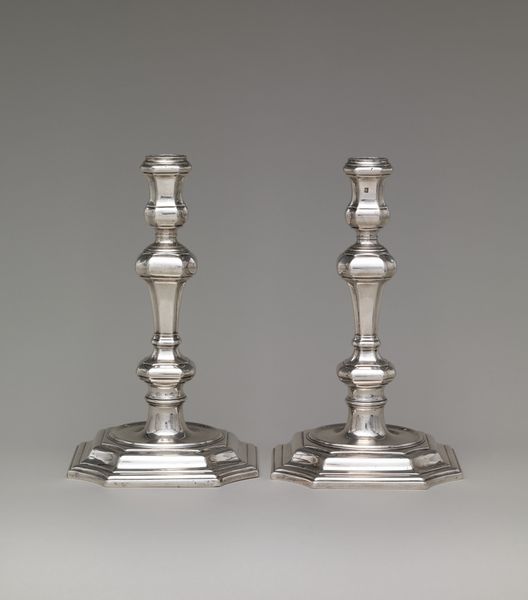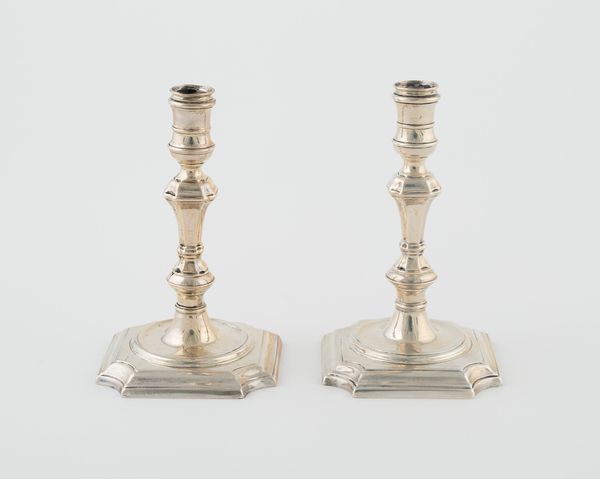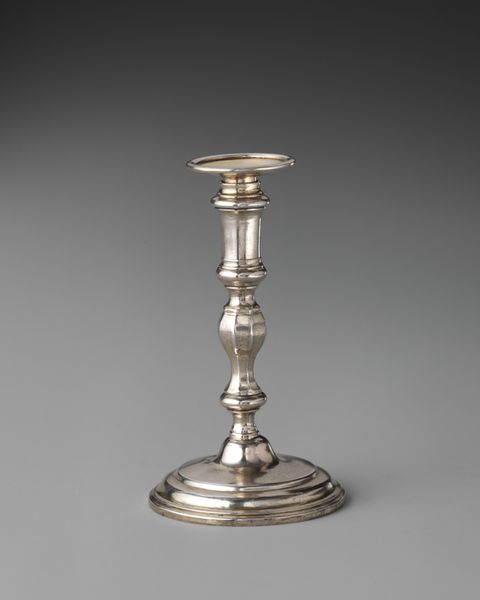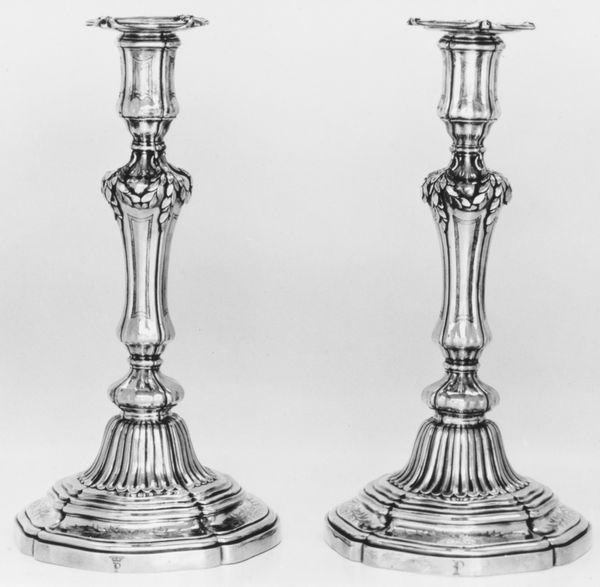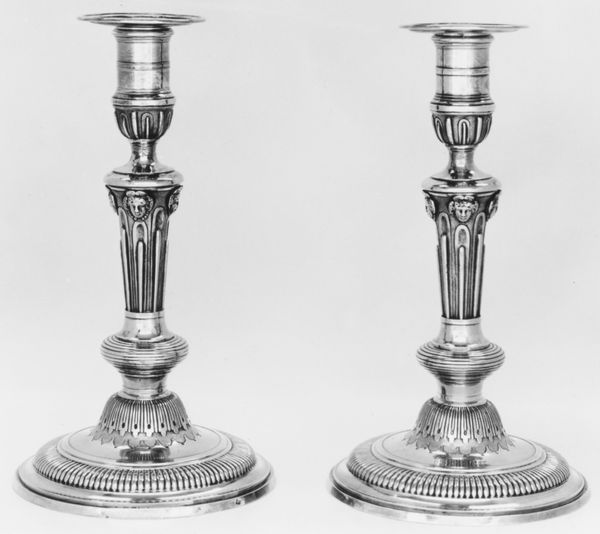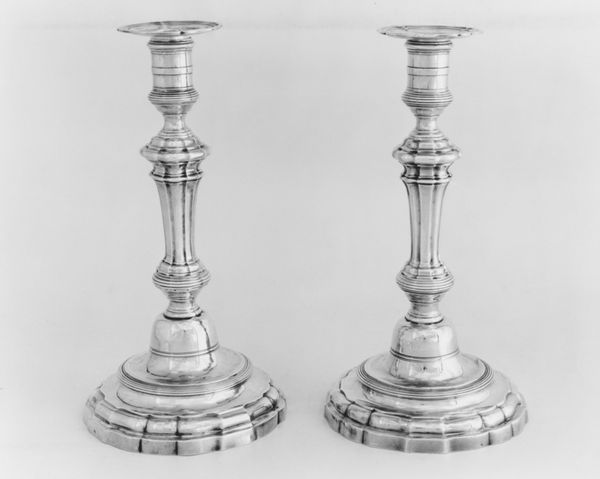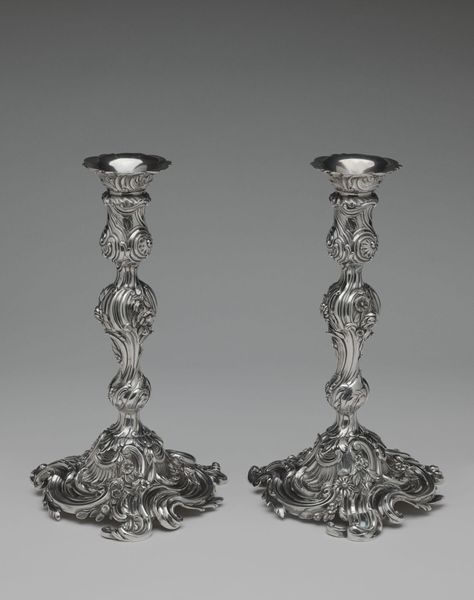
silver, sculpture
#
silver
#
baroque
#
sculpture
Dimensions: Height (each): 7 in. (17.8 cm)
Copyright: Public Domain
Editor: Here we have a pair of Baroque-style candlesticks made of silver by Thomas Merry I, dating back to 1713-1714. They feel so rigid and formal, how do you interpret them? Curator: I see these candlesticks not just as functional objects or displays of wealth, but as potent symbols of power and hierarchy within 18th-century British society. Silver, especially pieces like these, was primarily accessible to the elite, reinforcing their dominant social position. The symmetry, a classic Baroque element, embodies the desire for order and control characteristic of that era. Editor: Order and control? Could you elaborate on that in terms of their function? Curator: Absolutely. The act of lighting these candlesticks – imagine them illuminating a lavish dining table or a formal gathering. Light in this period was not just about visibility; it was about setting the stage for social performances, about accentuating status, and quite literally, about who could afford to 'shed light' on matters. Editor: That’s interesting. So even something as simple as owning these shows your status in society at the time? Curator: Precisely! Ownership granted one visibility and social influence. We must consider how the production of these silver pieces depended on the labor of marginalized people, obscuring those exploited realities under a veneer of aristocratic elegance. Editor: I never thought about that, thanks for highlighting the labor aspect of its history. These were not just ornate; they held socio-political value that still resonates. Curator: Indeed, reflecting on the power structures these objects represent prompts critical dialogues about the distribution of resources, access to visibility, and enduring inequalities in contemporary society.
Comments
No comments
Be the first to comment and join the conversation on the ultimate creative platform.
